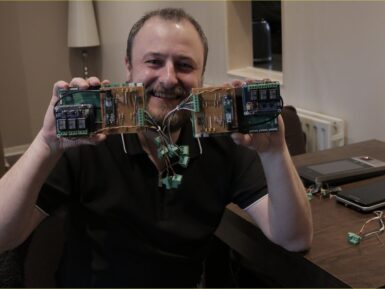
Overview
DFRobot Gravity: analog electrical conductivity meter V2 is specially used to measure the electrical conductivity of an aqueous solution, and then to evaluate the water quality, which is often used in water culture, aquaculture, environmental water detection, and other fields. You may also check Liquid Sensor Selection Guide to get better familiar with our liquid sensor series.
This ec meter product, as an upgraded version of the electrical conductivity meter V1, greatly improves the user experience and data precision. It supports 3~5v wide voltage input, and is compatible with 5V and 3.3V main control board; The output signal filtered by hardware has low jitters; The excitation source adopts AC signal, which effectively reduces the polarization effect, improves the precision, and prolongs the life of the probe; The software library uses two-point calibration method, and can automatically identify standard buffer solution, so simple and convenient.
With this product, the main control board (such as Arduino), and the software library, you can quickly build an electrical conductivity meter, plug, and play, no welding. DFRobot provides a variety of water quality sensor products, uniform size, and interface, not only meet the needs of various water quality testing but also suitable for the DIY of multi-parameter water quality tester.
Conductivity is the reciprocal of the resistance, which is related to the ability of the material to carry the current. In the liquid, the reciprocal of the resistance, the conductivity, is the measure of its ability to conduct electricity. Conductivity is an important parameter of water quality. It can reflect the extent of electrolytes present in water.
Tips:
In order to ensure measurement accuracy, it is strongly recommended to add a temperature sensor to measure the temperature and achieve automatic temperature compensation.
Features:
- 3.0~5.0V wide voltage input
- Hardware filtered output signal, low jitter
- AC excitation source, effectively reduce polarization
- Gravity connector and BNC connector, plug and play, no welding
- Software library supports two-point calibration and automatically identifies standard buffer solution, integrates temperature compensation algorithm
- Uniform size and connector, convenient for the design of mechanical structures
Applications:
- Water quality monitoring.
- Aquaculture.
- Hydroponic & Aquaponic
Get Inspired
trying to understand how to convert serial data to digital data onb arduino micro

Whether granting access to public transit or restricting unauthorized personnel in buildings, NFC card readers can be extremely useful. Although most might not consider how they work – and simply happy getting through a turnstile – there’s a lot going on behind the scenes. In his video, Daniel Raines shows off a pair of prototype access control units (ACUs) that he’s constructed. The two networked devices are each based on a Raspberry Pi Compute Module 4 along with an Arduino Micro that controls six relays to allow or deny entry, provide feedback, fire, and lock up. More details on the project can be found in Raines' clip below.








